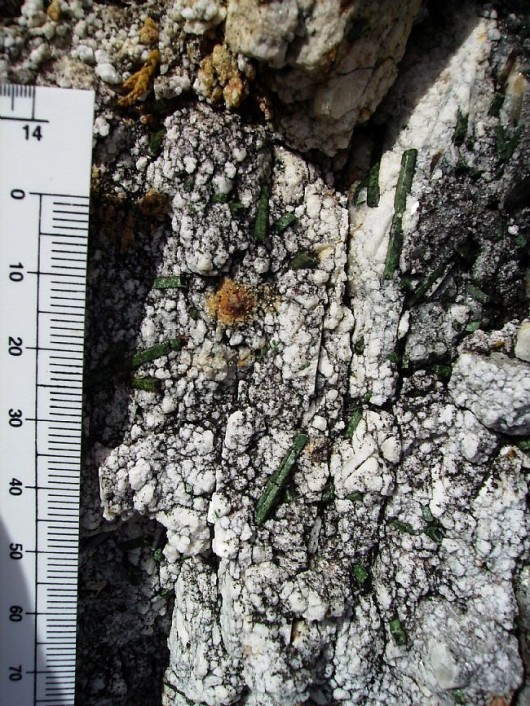
An ore sample from Niblack mine exploration. Bills before Congress would speed construction of a road linking it to the Prince of Wales Island system. (Photo courtesy Healtherdale Resources.)
Employment opportunities mining was one of several topics discussed during Wednesday’s Ketchikan Chamber of Commerce luncheon.
Graham Neale is chapter chair of the Alaska Miners Association. He is also director of the University of Alaska Southeast’s Center for Mine Training in Juneau. Neale says mining is an important industry.
“You look around this room, and pretty much everything that’s in this room has either come out of the ground or on top of the ground. And everything that we’re eating has come from agriculture. Everything that’s made out of wood came from the timber industry which is obviously a huge economic driver in this region during the ‘70s and ‘80s. And everything else comes out of the ground. And so that’s why we mine. We’ve built ourselves a society around it, and we’ve come to depend on these things in our natural life.”
Casey Bain works at the Center for Mine Training coordinating programs and recruiting new students.
“My mission is to get out there and get high school seniors interested and involved in mining. To know these jobs are here, and to know what kind of training opportunities they need to become a successful employee in the industry.”
Bain showed a map of Alaska illustrating where the mining workforce comes from.
“They come from all over. And these mining companies, they don’t want to have to go down to the Lower 48 to get their miners. They want their miners right here in Alaska. And that’s my job. I need to put more dots on that map.”
Bain says the average annual salary in the mining industry in Alaska is $108,000.
“With these opportunities at home for these homegrown kids, I think it’s imperative that we let them know these opportunities are here.”
Bain says different types of workers are needed in the mining industry, from entry level to professional and technical.
“These camps, they’re out in the middle of the woods. They need people to cook. They need people to scrape. They need people to test water. I let folks know that there’s a lot more than getting there and blowing stuff up.”
Neale says he and Bain were in Ketchikan, in part, to introduce the UAS mining program to students.
“We went to Kayhi and Revilla just before we came here. We’ve had 250 students go through that class since the program’s inception. The whole point is to act as a catchall into our mine mechanics programs. We have a one-year occupational endorsement, two-year associated applied science, and from there, hopefully, into employment.”
The program began in 2011. The next introductory training session begins January 29th.








